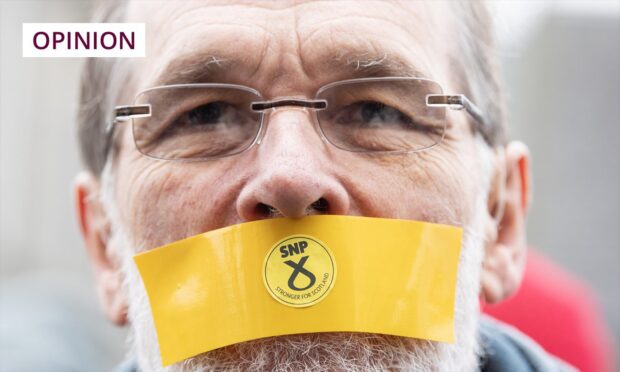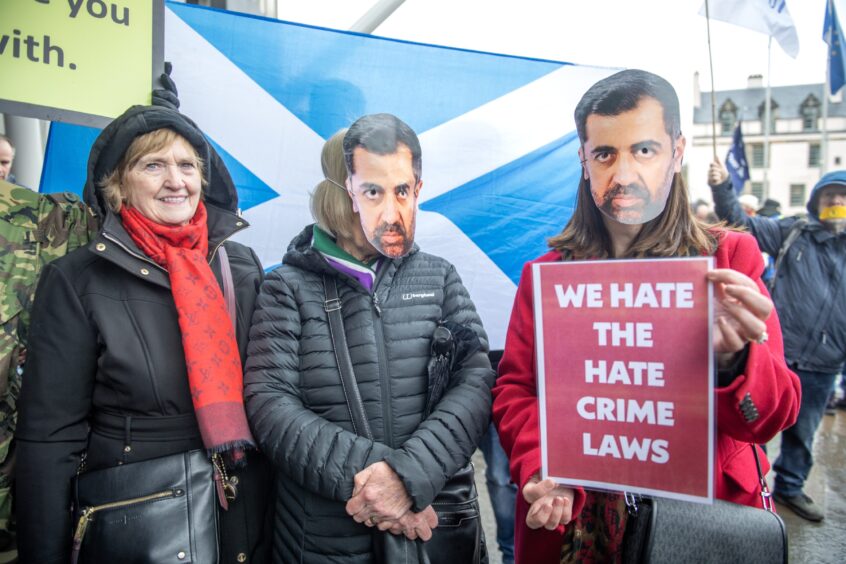Racist graffiti daubed on the walls of homes in Broughty Ferry, near where First Minister Humza Yousaf lives with his family, shows Scotland in 2024 is not immune to hatred and bigotry.
But rather than discussing how we can rid our country of this poison, recent weeks have been dominated by fierce debate around the introduction of new Scottish anti-hate laws.
Officially the Hate Crime and Public Order Act, it is intended to broaden existing provisions outlawing the spread of race-related hatred to include behaviour considered abusive which has the intention of stirring up hatred based on age, religion, disability, sexual orientation or transgender identity.
But however well intentioned, as is often the case it is the detail of the act which has prompted serious fears that it will become yet another example of ill-drafted Scottish Government legislation with harmful unintended consequences.
Unlike almost any other crime, critics say the law has left most Scots no clearer on exactly what will constitute an offence of “stirring up” hatred.
This has not been helped by a confused Police Scotland marketing campaign, which provided no clear guidance on how the new laws would be enforced.
And with those falling foul risking a maximum prison sentence of up to seven years, concerns about the chilling effect of the vagueness of the new law are understandable.
Dubbed a “clype’s charter”, a deluge of complaints have already been received by the police and the impact of vexatious reports on the force’s resources are a serious concern – as First Minister Humza Yousaf himself has recognised.
Even in the absence of a prosecution, the process of being reported to the police and investigated itself can be chilling. It is understandable why some say it has made them fearful of engaging in political debate on controversial issues.
However, we must not forget that as legitimate as many of the concerns about the wording and implementation of these new laws are, some have chosen to play a dangerous game.
Included among those who argue the act represents an illiberal and authoritarian overreach are a minority who have co-opted opposition to advance their political agenda of denial.
Racist and sectarian abuse in Scotland is still sickeningly common, with surveys revealing that as many as two thirds of LGBT+ people have experienced a hate crime.
And as the racist and Islamophobic graffiti The Courier revealed in Broughty Ferry demonstrates, this is not a phenomenon restricted to the wild west of the internet.
It is also one that worms its way into our every day lives, causing untold harm in our communities.
A responsible society cannot ignore this. Where behaviour crosses into bigotry or worse, those responsible should be held accountable – including in the courts where necessary.













Conversation